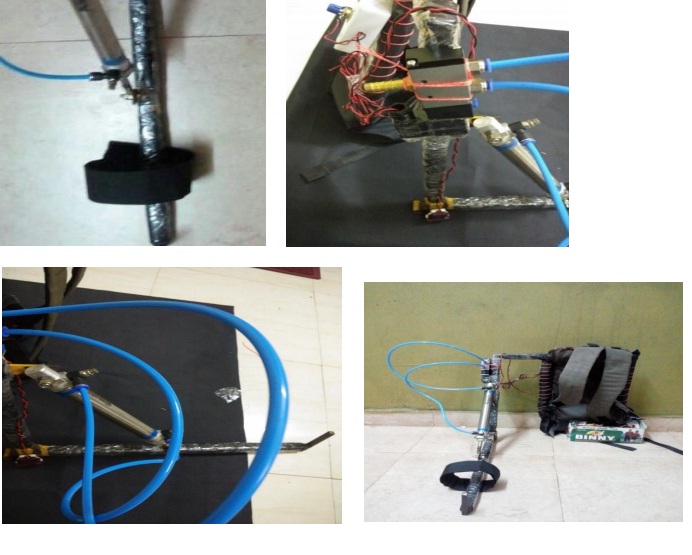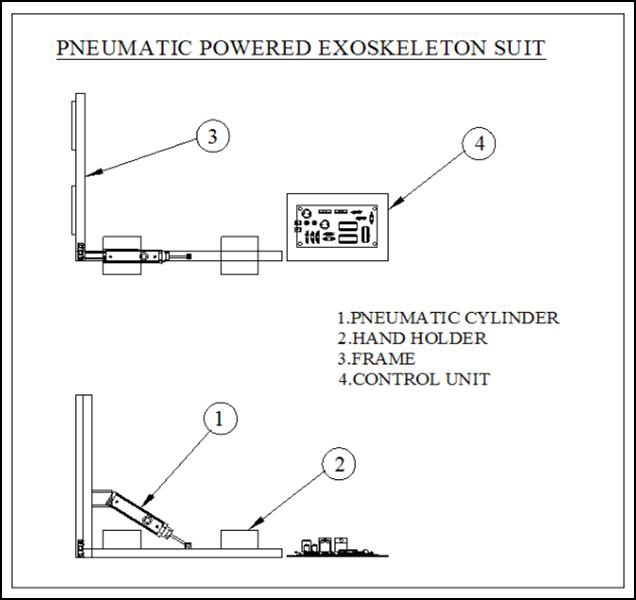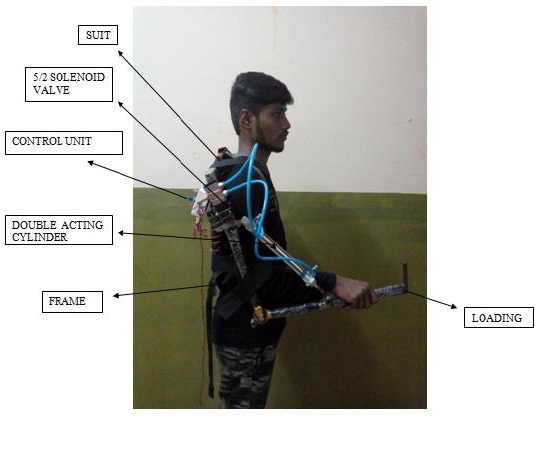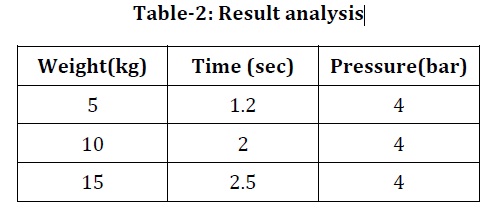





Published on Nov 30, 2023
Exoskeleton have evolved as leading tools for augmenting able-bodied performance which is assisting human mobility and restoring lost limb function exploiting biomimetic design, the device may be worn in close proximity to the body and transmits torques via powered revolute joints and structural limbs. In the present work a comprehensive design and fabrication of hand exoskeleton technologies for rehabilitation and assistive engineering were made from the basic hand biomechanics to actuator technology with the involvement of pneumatic power. The designed suit reviews the state of the art of active hand exoskeletons for the applications in the areas of rehabilitation and assistive robots
Exoskeleton arm is an anthropomorphic external mechanical structure that allows for the transfer of mechanical power from the exoskeleton structure to the human arm. Excelsior’s exoskeleton suit, also known as powered exoskeleton, exoframe or exosuit, is a mobile machine consisting primarily of an outer framework worn by a person, and a powered system of pneumatic artificial muscles (fluidic muscles) that delivers at least part of the energy for limb movement. Thanks to this device the user will no longer feel any fatigue in carrying heavy loads for long periods of time. Recyclable, light and enduring materials are used in this project in order to fulfill safety and environmental concerns. The main function of the exoskeleton suit is to assist the wearer by boosting their strength, endurance and durability. They are commonly designed for military use, to help soldiers carry heavy loads both in and out of war.
In civilian areas, similar exoskeletons could be used to help firefighters and other rescue workers survive dangerous environments. The medical field is another prime area for the exoskeleton technology, where it can be used for enhanced precision during surgery or as an assist to allow nurses to move heavy patients. In our project lift the weight up to 5-20kg. Because of their inherent motor and sensory requirements, hand exoskeleton technologies for rehabilitation and assistive engineering have not progressed as rapidly as the exoskeleton robots and devices for lower and upper limbs that have become popular over the last decade.
These requirements have inspired considerable developments in robotic hands in terms of their degrees of freedom, weight, size and dexterous manipulation capabilities. At the same time, enhancement of hand functions using exoskeleton technologies for those who have lost or weakened hand capabilities because of neuromuscular diseases or aging has become an important issue, because hand functionality is a dominant factor in living an independent and healthy life..
In this present competitive world there is huge scarcity of man power, so there must be an alternative to reduce this problem. Even in industrial application it requires more human resources for daily work and load carrying process is more. All these above work can not done humans. To overcome this situation pneumatic exoskeleton system is adopted to ease the work and minimize stress of prime area for exoskeleton technology, where it can be use for enhanced precision during surgery or as an assist to allow nurses to move heavy patients.
The important parts of pneumatic exo-skeleton suit are
1. Compressor unit
2. Solenoid valve (direction control valve)
3. Double acting cylinders
It is one of the important part of exoskeleton suit. The capacity of compressor is 4-8 bars. It provides the necessary pressurized air required to operate the system. Our compressor has ability to lift up to 5-20 kgs load.
It is used to control the direction of the pressurized air in this pneumatic system using 5/2 direction control valve. It requires two valves.
These cylinders are actuated by compressed air which can lift the load. This project requires four cylinders for operation (120mm stroke length The working of the exoskeleton is completely based on the mechanisms of the pneumatic cylinders and solenoid valves and the joints which will give different degrees of freedom for every parts to get easy motion for the human wearing it. When air from compressor makes cylinder to actuate and helps in lifting weight which will be connected to hook through arm frame the force required to lift weight will be more so to reduce the effort of cylinder and to increase the capacity we are using one cylinder were the weight will be transferred to single arm and shoulders and the tension on cylinder will reduces to higher extent. In our case lifting energy will be produced by compressed air which will actuates the double acting cylinder and the complete setup of compressor and actuators will produce more force than the stationary weight.


This pneumatic powered exoskeleton gives quick response to human action and flexible compared to hydraulic and electrical type exoskeleton. Our project designing is to lift load up to 5-20kgs and testing is in process.

From the conducted experiment, we obtain the following results which states that as the load increases, the time taken for the lifting of the load also increases at constant pressure.

The idea behind this project is to develop an inexpensive and user friendly system. This project shows that it is simple in construction, design and cheaper. It gives quick response and flexible compared to hydraulic and electrical type exoskeleton. This can be achieved while maintaining simplicity, ease of use, implementation and maintenance.
Our project is not only used to lifts weights but also is applicable in rescue operations, military, industries. It makes physically disabled people to carry weights in their daily life because the maximum load is carried by this pneumatic system.
[1] Abdullah almomani, Faisal Miqdadi, Mustafa Hassanin, Mustaf Samy”pneumatic fluidic muscles based
[2] Boris “RoboticExoskeleton for Rehabilitation of upper limb” American Journal of Mechanical Engineering, 2014 2 (7), pp 299-302.
[3] Liszka, Michael, Department of Aerospace Engineering, university of Maryland, “Mechanical Design of A Robotic Arm Exoskeleton For Shoulder Rehabilitation”, 2007-02-01T20:24:10Z
[4] Simone Marcheschi, Fabio Salsedo, Marco Fontana and Massimo Bergamasco.“Body Extender: whole body exoskeleton for human power augmentation” 2011 IEEE International Conference on Robotics and Automation.